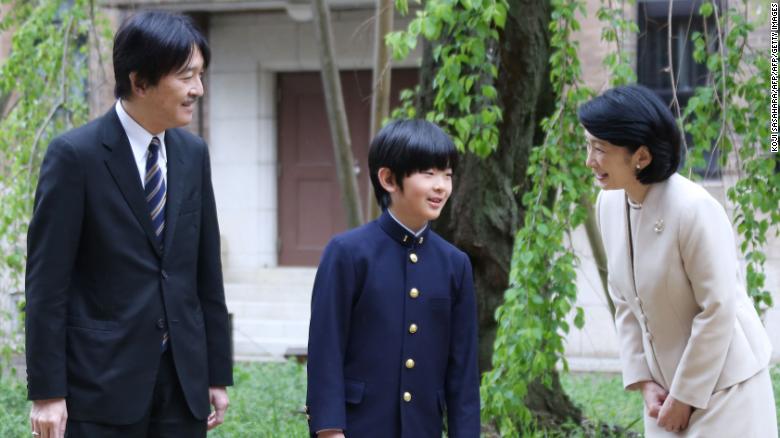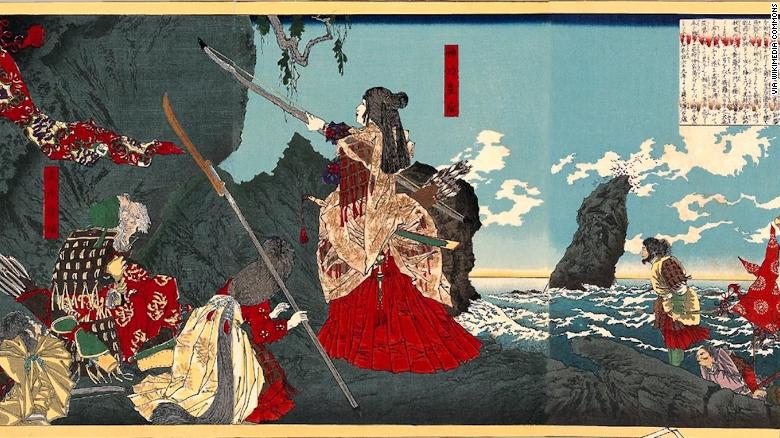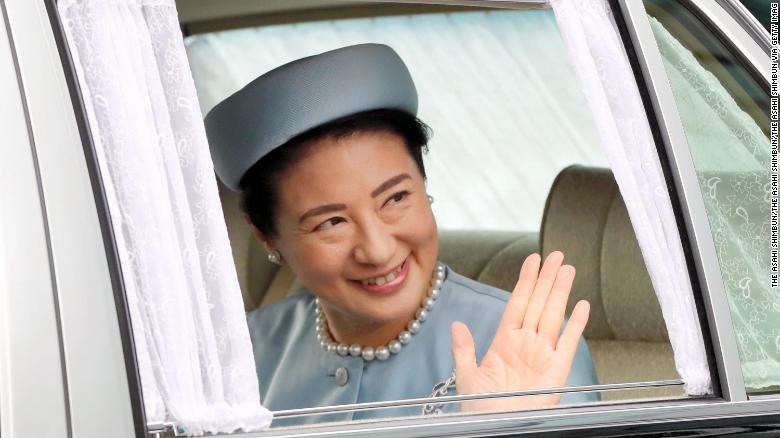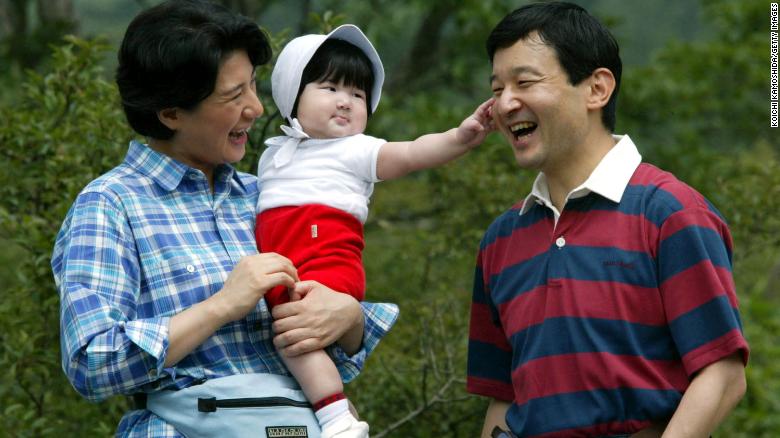The long-term survival of the world’s oldest monarchy will depend on a schoolboy when Japan’s current emperor abdicates next week, reviving calls for an end to laws that bar women from the throne.
Twelve-year-old Hisahito, son of Crown Prince Akishino, will become second-in-line to the Chrysanthemum Throne when Akishino’s elder brother, Naruhito, inherits the crown from their father on May 1.
Akishino will be first in line but is already 53.
“The whole future of the Imperial family depends on one little boy — that he will remain healthy and be willing to marry and have children with his wife,” says Ben-Ami Shillony, a professor of Japanese at the Hebrew University in Jerusalem.

Conservative and patriarchal Japan excludes women — who make up 13 of the 18 members of the royal family — from taking the throne. But this wasn’t always the case.
Empresses ruled Japan at various times over several centuries until they were barred in 1889.
Female rulers
Archeological studies of tombs show that female chieftains were prevalent in western Japan in the fourth century, according to Chizuko T. Allen, a historian at the University of Michigan.
These women, who were buried alongside iron weapons and tools, were competent political, military and religious leaders, says Allen. Tombs for male chieftains only began appearing in the fifth century, she writes in a paper published in the Japan Forum journal.
While the tradition of female rulers and chieftains was commonplace in ancient Japan, Shillony says history books tend to emphasize the feats of male emperors.
“Even if the female empress achieved many things, they are still not regarded as prominently as the male emperors,” he says.
Japan’s first recorded empress, Suiko, ruled from 592 for around 35 years until her death and is credited with forming the country’s first constitution. Powerful Empress Koken ruled twice: at first, from 749 to 758 and then as Shotoku from 764 to 770, working to spread Buddhism beyond the capital.
Empress Genmei (707 to 715) even put her daughter, Gensho, on the throne after her own abdication, thinking she would make a better monarch than Crown Prince Obito, according to Hitomi Tonomura, a University of Michigan historian.

Some historians maintain the empresses were merely puppet rulers who abdicated once a suitable male heir came of age. Others say they shaped Japan’s history more than their male counterparts.
“From today’s perspective, it’s interesting to think of how the contribution of Japan’s past reigning empresses to history has become so diminished,” says University of Michigan historian, Hitomi Tonomura.
“By totally ignoring these women or interpreting their roles as mere ‘fillers’ between (Imperial) men, Japanese society offers no historical imagination for what women can be and do.”
Modern Japan
As Japan modernized during the Meiji era of 1868 to 1912, the leaders of the time changed the role of the emperor, reinstating him as military commander-in-chief. –
Because a woman could no longer command the military, Meiji leaders believed it would make no sense to have reigning female empresses, says Shillony. A male-only succession was established.
The desire to emulate the West was also strong.
Meiji leaders took inspiration from the Prussian constitution — which forbade women from ascending the throne — and in 1889 barred women from being enthroned, says Shillony. They did not wish to replicate the British model where Queen Victoria reigned.

Instead, the period saw a masculinization of the emperor and of Japanese society in general as the Meiji regime emphasized the perceived superiority of men over women.
“In the Meiji constitution, the notion of ‘ie’ (house) was inscribed. That subordinated wives and household members under one patriarch. This wasn’t the case before,” says Tonomura, the historian.
Tonomura explains that during the Meiji era, modern Japan formally became a patriarchal society. Some Meiji laws on birthrights and marriages, such as married couples using the same surname (generally the man’s), are still applicable to this day.
US influence
The US occupation following Japan’s defeat in WWII brought changes to society as American values were slowly introduced.
Under the post-war constitution, the emperor’s position was changed from ruler to figurehead and the Imperial family was banned from engaging in politics. But while women were given the right to vote in 1945, no efforts were made to reinstate their right to the throne.
“The US didn’t want to alienate the Japanese establishment by diminishing the emperor’s status,” says Shillony. “People thought the question of gender in the Imperial family should be dealt with by future governments.”
Such discussions finally came to a head in 2004 under then-Prime Minister Junichiro Koizumi, whose cabinet formed a panel of politicians and academics to consider the issue. At the time, the Imperial family had not produced a male heir since 1965, while Crown Prince Naruhito and Crown Princess Masako had a daughter named Aiko in 2001.

Under current law, only male heirs with emperors on their father’s side can succeed to the throne. The panel’s report suggested a legal change either to allow a female monarch or to reinstate members of the old aristocracy who were stripped of their royal status after WWII.
But the proposition provoked strong opposition from Japan’s ultra-conservatives, says Shillony. The plans were shelved once Hisahito was born to Princess Kiko, the wife of Crown Prince Akishino in 2006.
Unreformed Chrysanthemum Throne
Amid changing global attitudes on gender equality, nearly two-thirds of Japanese favor a law revision to allow women to ascend the throne, according to a 2017 poll by Mainichi Shimbun.
The debate on whether to let women who marry commoners remain within the imperial family has also resurfaced.
But female leadership remains elusive overall in Japan despite moves by the government to empower working women under a scheme dubbed “womenomics.”
Just 10% of politicians in Japan’s House of Representatives are female, according to data released earlier this year, one of the worst gender imbalances in legislatures worldwide.
Unconscious gender bias and male entitlement are still pervasive in Japan, says Tonomura.
And despite the legacy of powerful female rulers, the prospect of a modern-day equivalent is remote without significant moves to redress gender inequality.
“Some women think having a female emperor might be good as a kind of role model,” says Tonomura. “But getting a female monarch is wishful thinking at this time.”
The only likely change to the monarchy in the near future is one allowing princesses to stay in the Imperial family even if they marry a commoner. That could potentially, says Shillony, pave the way for a female succession in the future.
As reported by CNN
